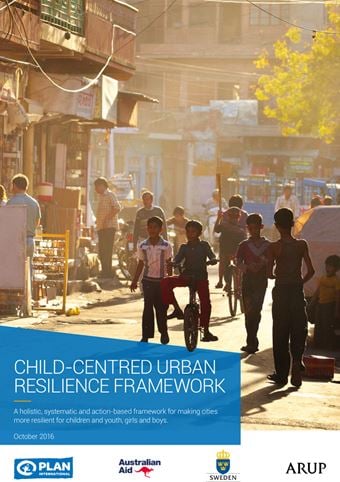This framework guides efforts to build urban resilience that support children, youth, girls and boys.
It integrates child and human rights into resilient urban development, enabling children to become agents of resilience. Public and private stakeholders can use this guide to assess and adapt current efforts to build resilience; identify opportunities; promote co-ordination and develop pathways to greater resilience through new initiatives.
The Child-Centred Urban Resilience Framework comprises four strategic areas. Under the strategic areas are 12 interventions that can direct future action.
-
Sustain Life in urban communities where children and youth lack adequate care. This can be done by strengthening and improving access to basic services, ensuring decent work and safeguarding survival and development.
-
Mobilise the Community to collectively ensure and value the protection and promotion of child and human rights. This can be done by promoting social security and protection, especially for girls, increasing community involvement and motivating key stakeholders.
-
Make Safe Places in urban areas where children can live, play and grow. This can be done by designing safe spaces and child-sensitive and gender sensitive infrastructure, and providing information that all children, youth, girls and boys can access.
-
Promote Integration to influence the management and planning of resilient cities that are responsive to and inclusive of children, youth, girls and boys. This can be done by improving preparedness to emergencies; promoting participation; and integrating child and human rights into policies and plans.
The development of this document – with funding support from the Australian Government and the Swedish Government – combined the experience of Plan International in child-centred programming in three cities in Asia – Manila, Dhaka and Jakarta – and Arup’s expertise in city systems and resilience.
